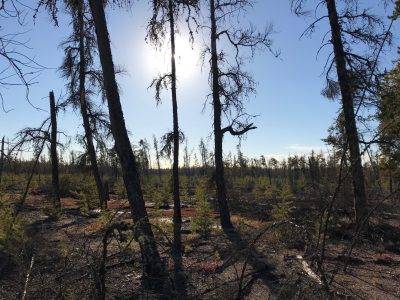Leaf Area Index Modelling in Northern Alberta
Client
Not disclosed
Location
Northern Alberta
Project Duration
June 2018 – December 2019
Background
Leaf Area Index (LAI) is a measure of the amount of leaf area relative to the ground area, and is an important vegetation parameter driving net primary production, water and nutrient use, and carbon balance. Many resource development companies seek to understand and manage the water balance in their areas of operation. LAI information, covering large spatial areas and updated several times per year during the growing season, is a useful input to hydrological models.
Services Provided
Hatfield developed a machine learning model, calibrated by in-situ measurements, based on optical and radar satellite EO data to estimate LAI of boreal forest ecosystems in Northern Alberta. The purpose of the model is to provide a cost-efficient and consistent method to estimate LAI over the snow-free / leaf-on season for any given year. The “Optical-SAR” model developed by Hatfield shows the ability to predict LAI monthly while capturing the fine spatial variability in LAI. Integration of Sentinel-2 data with Sentinel-1 data leverages the strengths of both satellite systems, with multi-spectral data sensitive to the photosynthetic components of the canopy and radar data sensitive to the structural components, providing additional information under the canopy given it has more penetration capability.
Hatfield compared these Sentinel-based LAI estimates to the broad-scale LAI estimates from MODIS, with clear improvements in the data provided by the Sentinel model, which better captures the LAI across the heterogeneous land cover in the boreal forest region.
